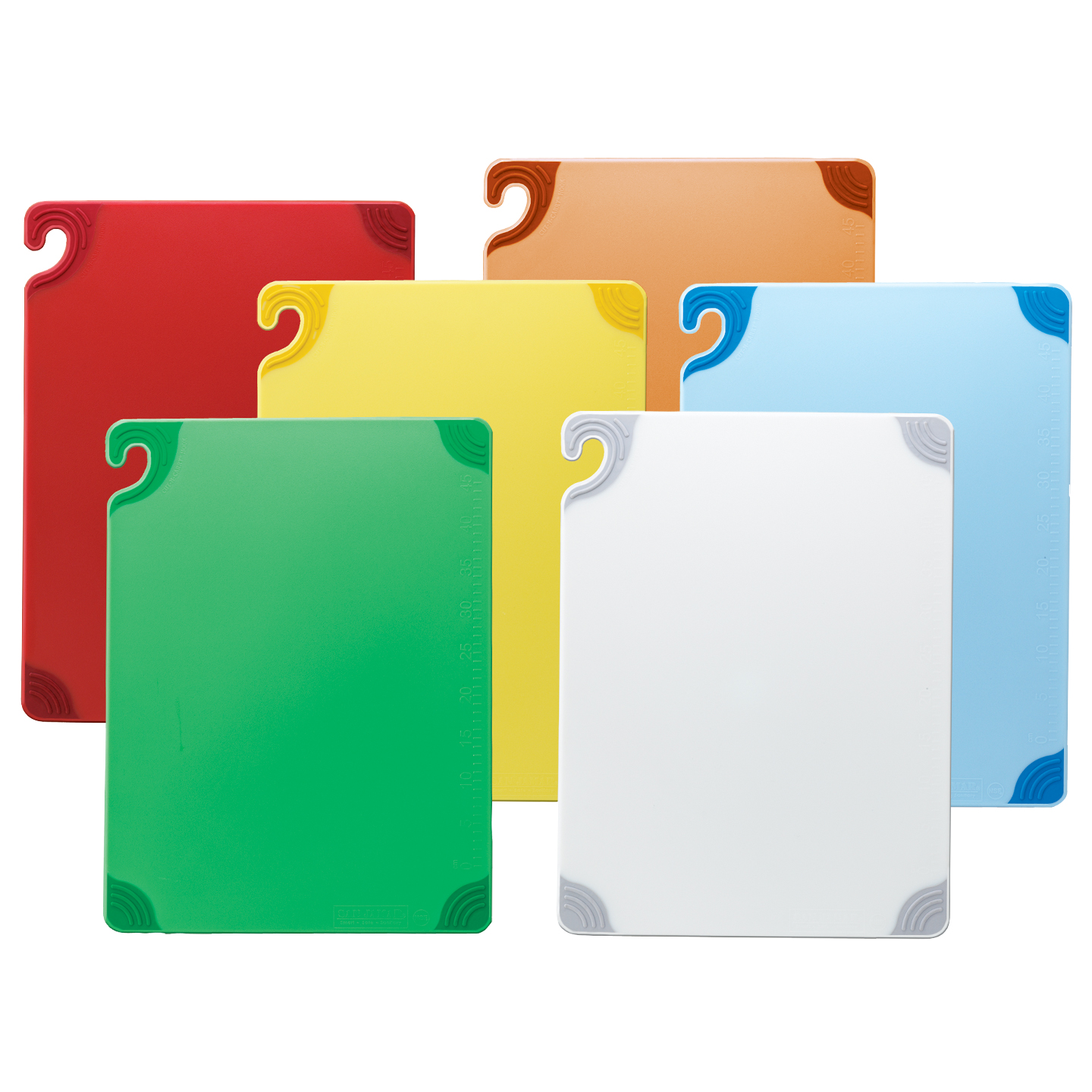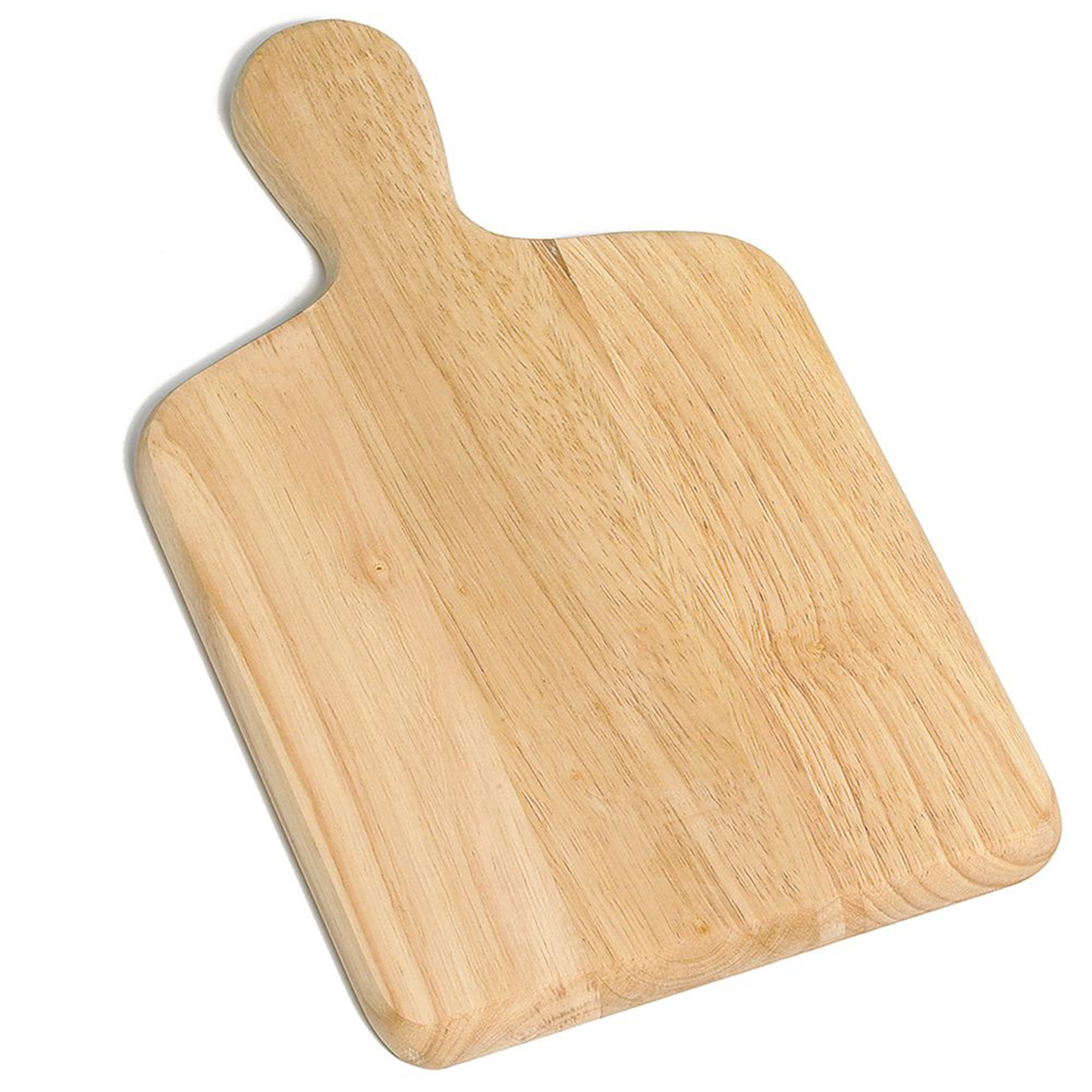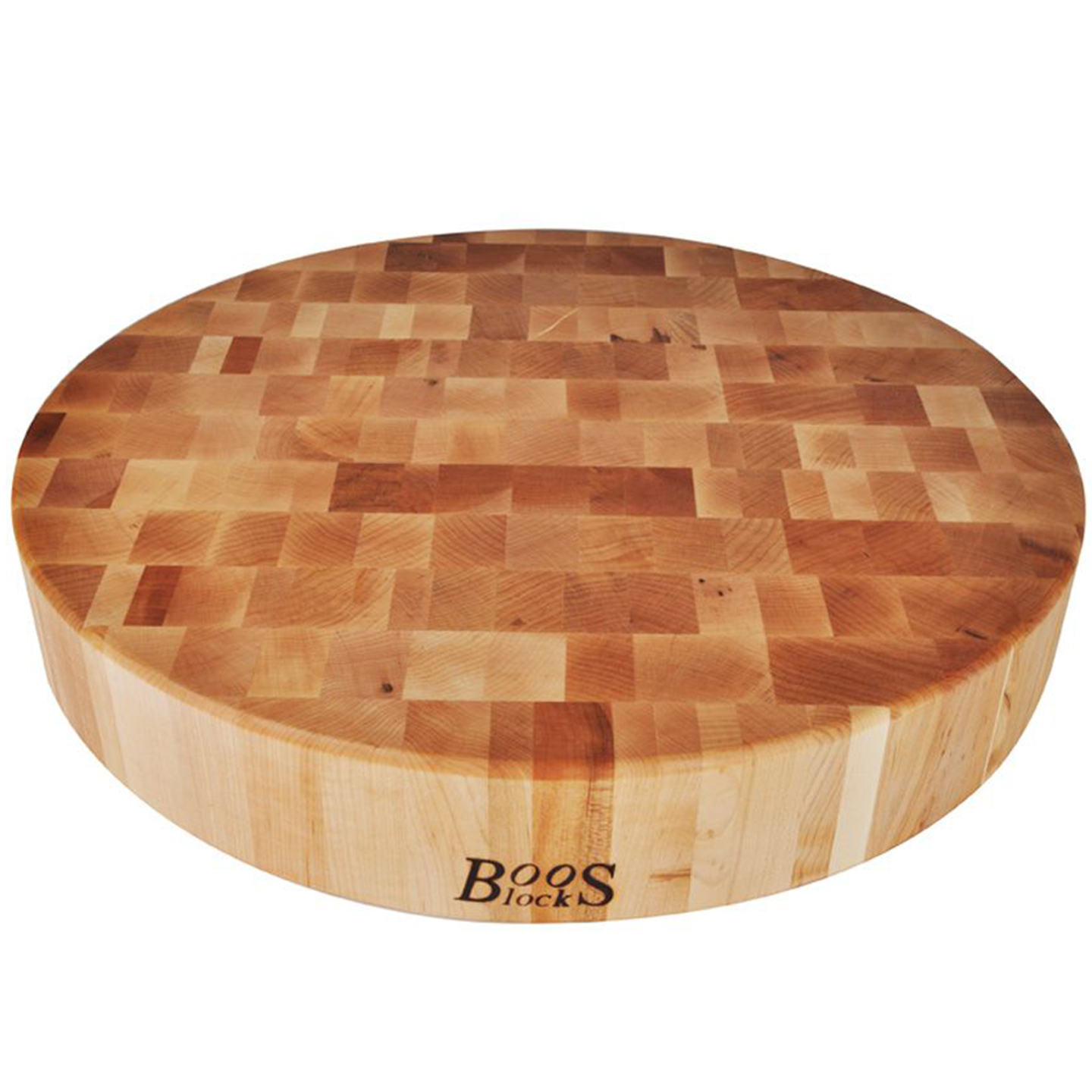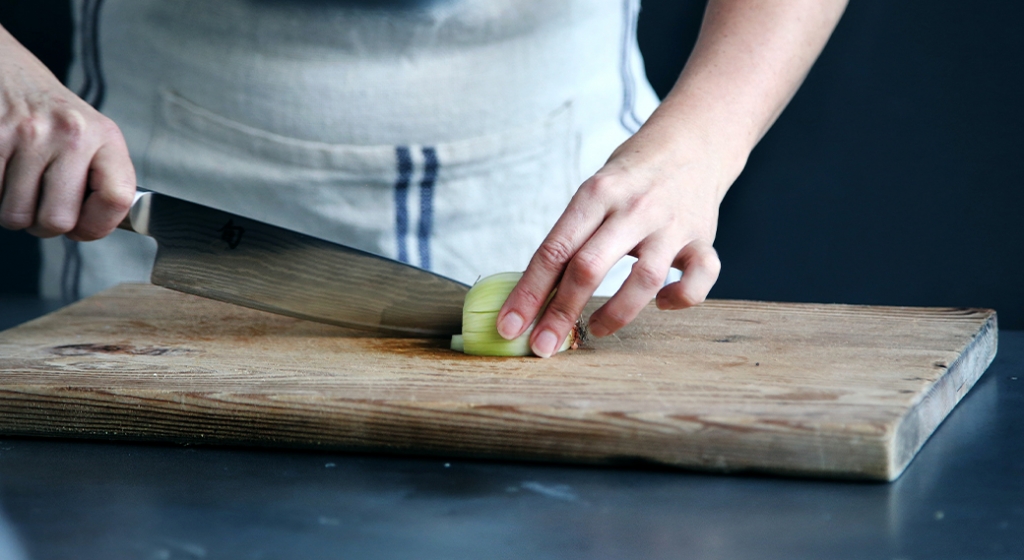As you continue to protect your customers and employees against germs and viruses, special attention to how your staff handles food and vegetables is paramount. Professional cutting boards are a staple in a commercial kitchen. And as a matter of fact, safely preparing ingredients would be nearly impossible without them.
You’ve probably seen plastic cutting boards of various colors, as well as wood cutting boards of various design. The good news is, both wood and plastic cutting boards are perfectly safe as long as they are sanitized properly. However, each type of cutting board has it’s advantages and disadvantages. Let’s dive deeper so you can choose the best cutting board for your restaurant or kitchen.
Plastic Cutting Boards
Let’s start by addressing the obvious array of colorful, plastic cutting boards. Although it is not required to own and use color-coded cutting boards, they are a great way to prevent cross-contamination across ingredients. Raw meats and vegetables should always be prepped on different boards whenever possible.
Ingredient Preparation: Color Coded Boards
You may be thinking that if you just keep raw chicken away from your veggies, you’re safe. The truth is that E Coli and Salmonella can spread these dangerous bacteria just as easily through leafy greens. Unless you manage your own Farm-to-table supply chain, you can’t be too cautious. A food poisoning or illness incident at your venue can set your brand reputation back years.

Next, let’s take a look at the most common uses for each colored board:
- Blue – Cooked Food
- Green – Fruits and Veggies
- Yellow – Raw Chicken
- Orange / Tan – Seafood or Fish
- Red – Raw Meat
We don’t have to mention, that color coding only works when everyone prepping food follows the color-guidelines. And following the guidelines is made all the easier when you have plenty of clean cutting boards available for prep! If you have a larger menu and any concerns of contamination, we’d recommend having an extra set available.
Watch for Signs of Wear
Plastic cutting boards are often less expensive than wood. And the color coding is very useful in preventing cross contamination. However, some plastic boards can dull your knives quicker than wood (although not as bad as glass) and are less forgiving on sharp edges. In addition, you’ll want to keep an eye out for excessive wear and tear.
The more scarred plastic boards get, the more difficult they are to clean. Knives can also cut deeper groves in plastic cutting boards designed to be easier on knife edges. Unlike wood boards, plastic doesn’t have “self healing” properties.

When a plastic cutting board gets too scarred up, bacteria can hide in the deep crevices, even after washing. If you’re not sure whether the groves in your plastic board are getting thoroughly cleaned, it’s probably time to replace the cutting board. The Food and Drug Association states:
Cutting surfaces such as cutting boards and blocks that become scratched and scored may be difficult to clean and sanitize. As a result, pathogenic microorganisms transmissible through food may build up or accumulate. These microorganisms may be transferred to foods that are prepared on such surfaces.
On the plus side, plastic cutting boards are almost always less expensive, easier to replace, and they can go through the dishwasher for sterilization.
Wood Cutting Boards
Wooden cutting boards generally have a better reputation than plastic cutting boards. However just as they have several advantages, they have downsides as well. First let’s look at the 3 most common types of wood cutting boards.
- Face Grain – Usually the least expensive. $
- Edge Grain – More expensive than face grain. $$
- End Grain – The most expensive type of wood cutting board. $$$
Face Grain Cutting Boards
If you’re on a budget and prefer wood cutting boards, a face grain board might be for you. Face grain cutting boards can be more prone to warping, and are usually thinner by design. You can usually spot a face grain board by it’s construction of just one or very few pieces of wood. Face grain boards can be fine for lite use, however serious choppers will want to upgrade to Edge or End grain.
Imagine a 2×4″ piece of wood. The 4″ side that runs along the length of the piece of wood is considered the “face” side. Face grain cutting boards are great for cutting and serving bread! They can also be used as your primary cutting board, although they are more likely to warp under heavy use.

Edge Grain Cutting Boards
Edge grain cutting boards are a great compromise between face and end grain boards. This type of wooden board is built by gluing several pieces of wood with the edge facing up. Imagine our 2×4″ piece of wood. The narrow side that runs along the length of the board is the edge.
Edge grain boards are known for being more durable than face grain. And they are a great option for all the slicing and dicing that needs to be done to prep your venue’s ingredients. Edge grain boards will still scar over time and need to be properly washed and sanitized. To get the most of your cutting board, don’t forget to keep it oiled!

End Grain Cutting Boards
End grain cutting boards are often considered the premium option for wood cutting boards. A quality, end grain cutting board is also built by gluing multiple pieces of wood together. Let’s look at our imaginary piece of wood one more time.
When you cut a piece of wood, the “end” is the side of the wood that ran parallel to the cutting tool. The “end” of our 2″x4″ is the side that usually has the least amount of surface area (Although there are exceptions.) When you set the piece of wood on its end grain side, the piece of wood will stand at its tallest.

One of the reasons chefs and prep cooks often opt for end grain cutting boards is their ability to “self-heal.” This means the cuts made on the board seal up when the board is maintained and oiled properly. Cuts made on an edge or face grain board are shallower, but they will not heal over time like an end grain board. The feat of self-healing is achieved because the vertical wood fibers separate as the knife glides across the surface. Afterwards, the fibers come back together naturally, sealing the scar.
Although end grain boards usually cost more up front, properly maintained end grain cutting boards can provide years and years of commercial service.
Maintaining Your Cutting Boards
If you are using plastic cutting boards, then maintenance is easy. Just throw them in the dishwasher. The hot water used to sanitize dishes works great on plastic cutting boards as well. The temperatures reached by your dishwasher are sufficient for killing bacteria and viruses. It’s also perfectly acceptable to hand wash plastic boards as well. Just be sure to scrub with some “elbow grease” to clean out any scarred areas on the board.
Wood cutting boards tend to preserve knife edges, but as with all trade-offs, they require a bit more care. Here are the main steps in cleaning and maintaining a wood cutting board:
- If your board is new, be sure both sides are properly seasoned with mineral oil and conditioner.
- After each use, always wash and scrub your wood cutting board.
- Hand wash wooden cutting boards. Dishwashers will wick out the board’s oils, drying it out. This can provide small spaces in the wood for bacteria to grow and cause your board to warp.
- Apply a cutting board oil as needed, such as John Boos Mystery Oil. This maintains the longevity and self-healing properties of your board.

With proper care and maintenance, commercial cutting boards can be a valuable tool in keeping your food prep area clean and free from bacteria and viruses. If you’re in the market for a new set of cutting boards, feel free to shop our selection!




In view of microplastics danger, are plastic cutting boards still ok to use?
Kitchen Swaps to Ditch the Plastics & Detoxify Your Kitchen – TENNESSEE MOON
Wow, I didnt know there was so much knowledge tied up with wooden boards. Thank you for sharing.